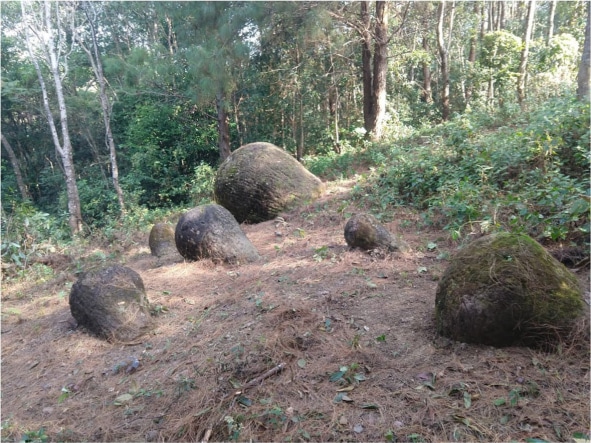Researchers from ANU are among a major collaboration that has found dozens of mysterious giant stone jars which may have been used for burial rituals have been unearthed across four new sites in Assam, India.
The 65 newly discovered sandstone jars vary in shape and decoration, with some tall and cylindrical, and others partly or fully buried in the ground.
Similar jars, some of which span up to three metres high and two metres wide, have previously been uncovered in Laos and Indonesia.
“We still don’t know who made the giant jars or where they lived. It’s all a bit of a mystery,” ANU PhD student Nicholas Skopal said.
Another mystery is what the giant jars were used for. The researchers believe it is likely they were associated with mortuary practices.
“There are stories from the Naga people, the current ethnic groups in north-east India, of finding the Assam jars filled with cremated remains, beads and other material artefacts,” Mr Skopal said.
This theory aligns with findings from the other jar sites in countries including Laos, which are also tied to burial rituals.
Initially, the aim of the new research was to survey the existing sites in Assam. However, as the researchers moved about the landscape they realised there was more to be uncovered.
“At the start the team just went in to survey three large sites that hadn’t been formally surveyed. From there grids were set up to explore the surrounding densely forested regions,” Mr Skopal said.
“This is when we first started finding new jar sites.
“The team only searched a very limited area so there are likely to be a lot more out there, we just don’t yet know where they are.”
The surveying and reporting of these sites is of great importance in regards to heritage management in India.
“It seems as though there aren’t any living ethnic groups in India associated with the jars, which means there is an importance to maintain the cultural heritage,” Mr Skopal said.
“The longer we take to find them, the greater chance that they will be destroyed, as more crops are planted in these areas and the forests are cut down.”
The researchers worked with local communities on the ground to uncover potential jar sites, often through areas of mountainous jungle that were difficult to navigate.
“Once the sites have been recorded, it becomes easier for the government to work with the local communities to protect and maintain them so they are not being destroyed,” Mr Skopal said.
The research was led by Tilok Thakuria, from North Eastern Hill University and Uttam Bathari, from Gauhati University.
The study’s findings are published in the Journal of Asian Archaeology.
Get all the latest Canberra news, sport, entertainment, lifestyle, competitions and more delivered straight to your inbox with the Canberra Daily Daily Newsletter. Sign up here.



